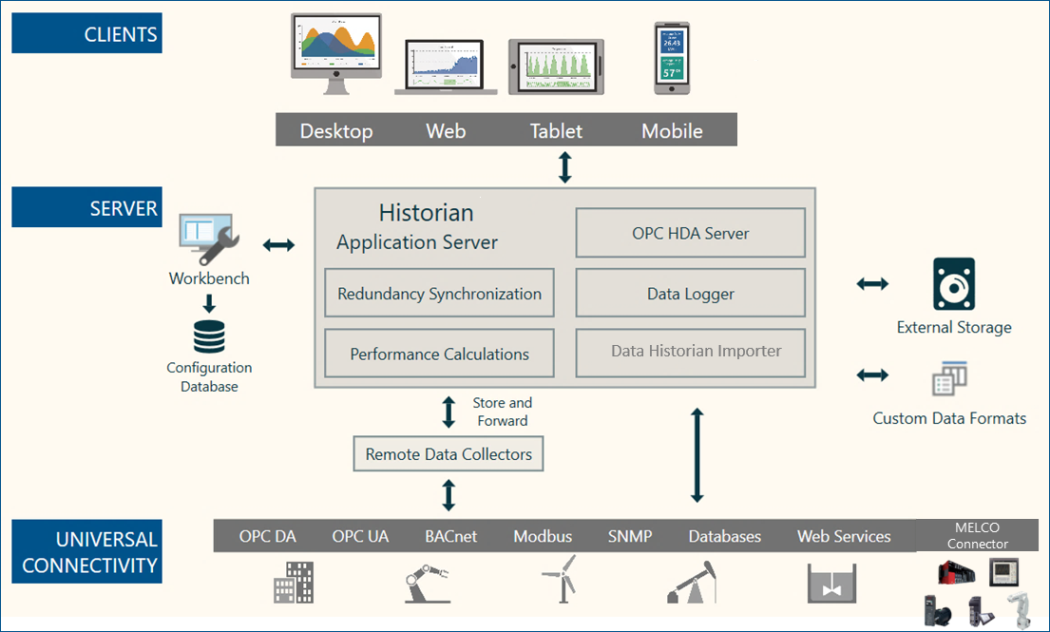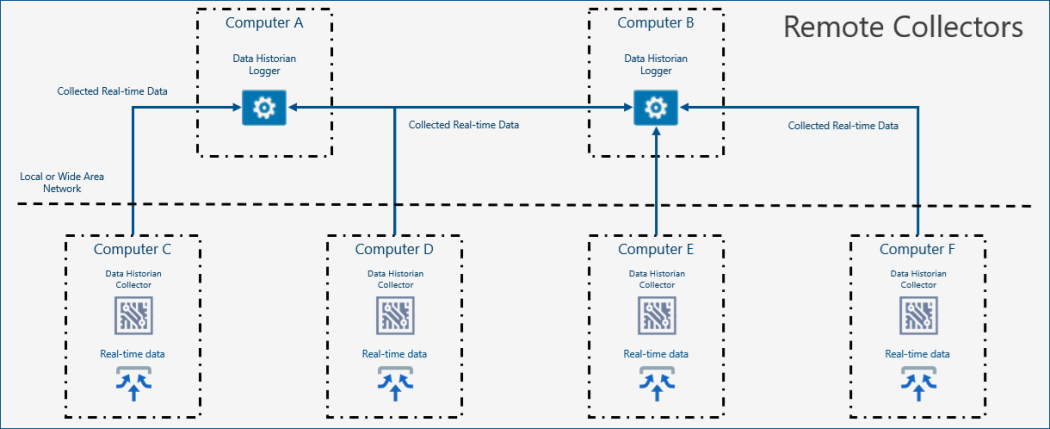Data Historian Core Components and Architecture
Data Historian is divided into two primary components:
- Collectors gather data from various sources, including OPC servers. Data is gathered in a reliable and efficient manner, even under high-load conditions or during network outages (buffering data for later synchronization). Collectors can be local or remote. Remote collectors can reduce network load by aggregating data onsite and transmitting calculated values rather than raw data, which minimizes network traffic.
- Loggers manage the process of writing data from collectors to the time-series database for long-term storage. They support redundancy, store-and-forward technology, and long-term archiving, ensuring that no data is lost during transmission interruptions.

The architecture supports:
- Distributed logging—Multiple collectors can feed into centralized or decentralized loggers.
- Data redundancy—Data Historian supports redundancy at both the collector and logger levels, ensuring no single point of failure.
- Advanced visualization—Data can be visualized and analyzed through tools like Trend Viewer, and external integrations such as Excel.
The following image depicts a decentralized logger configuration.
